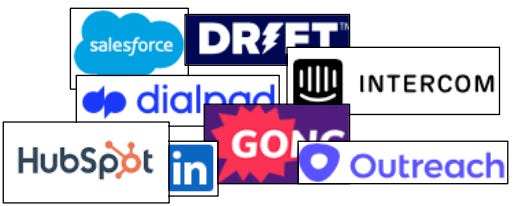#26 - Tool Overload
During my MBA summer internship I worked in product strategy for an early-stage SaaS company.
The target buyer? DevOps Managers.
Early in my tenure we launched a 14-day free trial as phase 1 of our PLG strategy.
To our surprise, we had A LOT of adoption - which we were ecstatic about. But as the weeks went by no one was buying and/or willing to engage with us to provide feedback. (DevOps don’t like speaking with people…).
After a few weeks and a lot of follow up, we found one brave soul willing to chat. His feedback was eye-opening and something we had not considered:
“The information I received was valuable, but I have a litany of tools I already need to log into on a daily basis and can’t deal with one more. Will you be integrating with X or Y or Z anytime soon? Would be great to just get alerts through those on an as needed basis rather than sifting through yet another tool. I won’t be willing to pay if this stays as a stand alone.”
I had my marching orders for the remainder of the summer. From a product strategy perspective, how do we deliver these valuable insights by seamlessly integrating our solution into their existing workflow?
2024 and Beyond
Salesforce, Gong, Clari, Outreach, Seamless, et al, were all “need to have” during the Golden Age of SaaS (2010 - 2022).
In the past 2 years, growth + churn has become a major issue for these companies.
Sales teams have leaned out significantly which has become a major challenge for the per seat licensing model. Adding to this, cold outbound just doesn’t work that well anymore.
Both of these factors have proven to be critical to their success. Dozens of new entrants smell blood and have flooded the market in the past year.
The problem? You guessed it - tool overload.
For the past couple of years my team has been using a hacked together system of Outreach + LeadIQ + Sales Navigator.
This solution was fine a couple years ago, but because of the steep drop off in meeting conversion from cold outbound, its value is diminishing. It’s also becoming a pain to hop between 3 platforms when prospecting, relative to the value we are getting.
The ability to build on top of an LLM has ushered in a new era of sales tools that will quickly render the “old guard” obsolete. As I’ve been evaluating the market, however, I’ve been disappointed.
These are all point solutions, not high-quality, and simply add another layer of tooling which is cumbersome (see my article on AI email copywriting here).
Yes, the technology needs to get better in order to actually drive meeting conversion, but the bigger issue is that none of the solutions are the clear “single-throat to choke.”
Apollo and Clay are getting there, as well as a few tools like Sprout.ai. But they still need a couple years for the technology evolve. The one that wins will be the single platform that effectively services the entire workflow for the leaner, more strategic, sales teams of the future.
The winner will leverage an LLM that will actually drive meeting conversion, not high-volume activity, conquer all the channels necessary to reach their customer’s unique ICP and have a business model based on performance, not # of seats.


